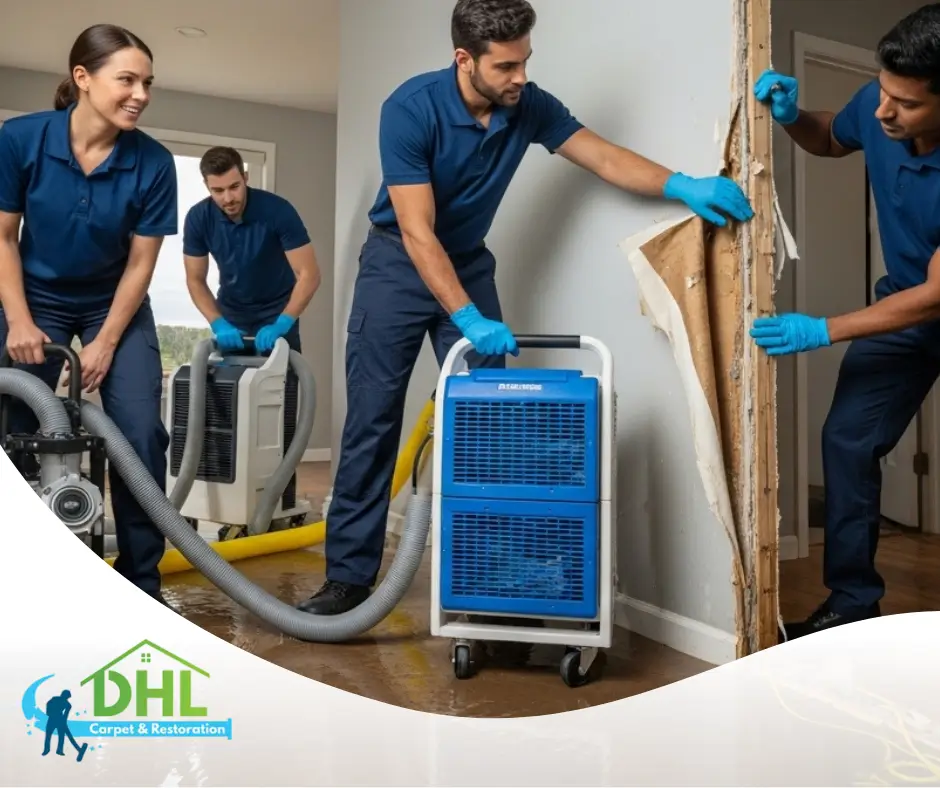When a flood strikes, the clock starts ticking. The first 24 hours after water intrusion are critical to prevent further property damage, reduce the risk of mold growth, and begin the road to full recovery. In this guide, we walk you through the essential steps to effective water damage restoration—starting from the moment the water stops flowing.
1. Prioritize Safety First
Before anything else, ensure it is safe to re-enter the property. Floodwaters may be contaminated with sewage or chemicals and can weaken your home’s structure. Disconnect electricity if it’s safe to do so, wear protective gear, and avoid wading through standing water.
2. Document the Damage Thoroughly
Take clear photos and videos of all areas impacted by the water. Capture both wide-angle shots and close-ups. Documentation is crucial for insurance claims and can help your chosen restoration professionals understand the full scope of work.
3. Begin Water Extraction Immediately
Speed is your best ally. Use wet vacuums, pumps, or mops to remove standing water. The longer water sits, the more severe the damage becomes. This early action is the foundation of any emergency water cleanup or flood damage restoration process.
4. Remove Wet Items and Materials
Take out soaked carpets, rugs, furniture, drywall, and personal belongings. Items made of porous material can harbor moisture, increasing the risk of mold growth. Salvage what you can, and prepare the rest for disposal or professional cleaning.
5. Dry and Dehumidify
After water extraction, thoroughly drying the affected area is essential. Use industrial fans and dehumidifiers to reduce humidity levels. Proper air circulation can prevent secondary issues like mold infestation or structural rot.
6. Inspect for Hidden Moisture
Moisture can linger behind walls, under floors, and inside HVAC ducts. Using a moisture meter or infrared camera can help detect hidden dampness. These are common tools in advanced water mitigation services.
7. Sanitize and Disinfect
Floodwaters often carry bacteria and toxins. Sanitize all affected surfaces, including walls, floors, and furniture, using EPA-approved cleaning agents. A thorough disinfection step is essential for any complete water damage cleanup.
8. Watch for Signs of Mold
Mold can begin forming in as little as 24–48 hours after water exposure. Keep an eye out for musty odors, discoloration on walls, and allergy-like symptoms. If in doubt, schedule a professional mold inspection to assess the risk.
9. Evaluate Structural Integrity
Once dry, check your property’s foundation, framing, and floors. Warped or sagging materials may need replacement. Structural repair is a core part of long-term flood restoration and should never be overlooked.
10. Plan for Future Protection
After cleanup, think proactively. Install sump pumps, elevate utilities, and seal basement walls to minimize risk of future flooding. Floodproofing steps can complement professional residential water damage repair services.
Why Acting Fast Matters in Water Damage Restoration
The longer you wait, the higher the risk of permanent damage and health hazards. Within hours, moisture can lead to swelling wood, delaminated floors, and electrical issues. Within days, mold remediation may become necessary. Fast action limits these impacts and lowers overall restoration costs.
Key Subtopics to Keep in Mind
- Emergency flood cleanup
- Structural drying
- Basement water removal
- Moisture detection
- Mold prevention strategies
Final Thoughts
Recovering from a flood is never easy, but your response in the first 24 hours can define the outcome. With a quick, strategic approach to water damage restoration, you can protect your home, preserve your health, and restore your peace of mind. Whether you’re managing minor leaks or a full-scale flood, each decision made in these early hours matters more than you might think.

